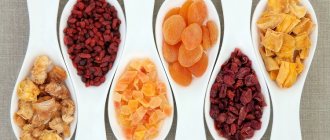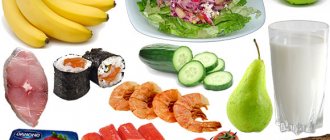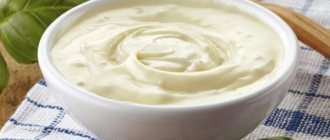Why does our body need calcium?
A lack of calcium makes itself felt quite quickly - dental problems begin, joint pain begins, and hair becomes weaker.
The importance of this element in nutrition is not limited to the state of the skeletal system - the optimal balance of the element ensures the normal functioning of blood vessels and the transmission of nerve impulses. It also affects the hormonal system.
Note!
With a deficiency, fatigue and irritation sets in faster. Remember about calcium and reconsider your diet if you experience restlessness or increased excitability.
To provide your body with calcium , supplement your diet with vegetables and fruits in which its level is quite high. With regular intake of the element in various forms from foods of plant origin, there is no need to fear osteoporosis. Thanks to it, the development of diabetes mellitus will be stopped.
You should know that for good absorption of calcium, vitamin D is required. Without it, normal metabolism cannot exist. Therefore, in addition to introducing calcium-rich vegetables and fruits , consider increasing your vitamin D levels.
Only in the combination of “Ca and vitamin D” will of calcium and phosphorus proceed as efficiently as possible:
- the bone apparatus is strengthened
- hair and nails grow quickly
- muscles are also strengthened
Vitamin D serves as a regulator of metabolism - at its normal level, calcium is completely absorbed and enters the teeth, bones, and hair. This also applies to the nervous system - with a lack of vitamin, ready-made compounds will begin to be pumped out of the bones, and the mineral entering the body will not be absorbed normally.
Therefore, along with adding Ca-containing foods to the diet, you need to think about normalizing D levels.
It is supplied to the body in several ways:
- stay in the fresh air (half an hour is enough, but daily)
- eating foods where its content is significant: cabbage, potatoes, nuts, spinach
- consumption of ground vegetables and fruits of early ripening varieties
The usefulness of each meal, the calcium content in each vegetable , fruit , should be monitored. After all, a decrease in the level of calcium in the body occurs unnoticed, and the deficiency is revealed by a jump in blood pressure or a gradual increase in appetite and the appearance of excess weight
The best vegetable juices
For freshly squeezed vegetable juices, you should use only fresh, undamaged or spoiled vegetables, without pesticides or growth additives, for example, if these are vegetables from your own garden. Store-bought vegetables should be thoroughly washed and peeled before juicing. Juices cannot be stored, since all vitamin and mineral substances disintegrate literally after some time.
Which vegetables are the healthiest vegetable juices:
1. Carrots – most often used as a base for vegetable smoothies. It is recommended to combine vegetables with greenish plants, such as cucumber, cabbage, celery. Carrots are enriched with keratin, B vitamins, calcium, potassium, and cobalt. The healing properties of vegetables include: it can help with skin diseases, weakened immunity, vision problems, and anemia. When consuming a drink that contains carrots, the kidneys, liver, and gall bladder are cleansed. Carrot juice cannot be used for peptic ulcers and enteritis. Excessive consumption of carrot juice burdens the liver. In fact, you can drink 1 glass of juice.
2. Beetroot contains drugs that have a detrimental effect on human well-being. To eliminate these drugs, the juice must be stored for up to 3 hours before consumption. It is possible to apply up to 100 grams per day. The juice is combined with pumpkin juice and carrots. Beets are enriched with these substances, such as: potassium, phosphorus, sulfur, alkaline compounds. Have beetroot juice on your own menu for lunch every day. You will notice an increase in muscle strength by 13% and endurance by 16%. Beet juice also strengthens the skeletal system, teeth, improves the functioning of the intestinal tract, and removes toxins and waste. Contraindications include kidney disease and peptic ulcers. The daily dose of beet juice should not exceed 300 grams. The juice is perfectly absorbed when consumed before meals.
3. Potatoes. It doesn't have a pleasant taste and is often used as a pharmaceutical ingredient when blending vegetables, for example as it is fortified with antioxidants. Daily quantity of juice 300 gr. The juice is perfectly absorbed when consumed before meals. Potatoes have: vitamins A, C, B, E, beta-keratin, folic acid, sulfur, potassium, calcium, copper, phosphorus, iron.
It is necessary for diseases: colitis, peptic ulcers, diseases of the gastrointestinal tract and digestion, rheumatism, skin rashes, fibroids, erosions, inflammation of the appendages, kidney pathologies. It is impossible to use potato juice with a low level of acidity in the stomach, with varying degrees of obesity and diabetes.
4. Cucumber is considered more of a dietary and pharmaceutical component for juice, for example, as it is mainly produced from water. Its flattering properties also rejuvenate and can be beneficial for well-being. The daily norm of juice is 2.5 cups. It is often used as a base compound in cocktails made from beets, carrots, and herbs.
Its composition contains vitamins A, C, E, PP, H, B, tartronic acid, essential compounds, sulfur, iron, iodine, calcium, phosphorus, silicon, magnesium, sodium, chlorine. The juice is used for: dilemmas with the liver, thyroid gland, heartburn, cardiovascular system, rheumatism, edema. Cucumber juice is much healthier if you make it vigorously with lettuce, onions, and honey. Side effects when used are a laxative effect.
5. Tomato – used to improve the digestive system, facilitate digestion and assimilation of food. The daily amount of juice is 1 glass, before meals. The composition has the appropriate components: vitamins A, B, C, PP; manganese, zinc, iron, chlorine, potassium, magnesium, cobalt, calcium, sulfur and almost all others. Used for disorders of the cardiovascular system, oncology, cancer cells, unstable digestive processes and gastrointestinal tract. It is not recommended to use for peptic ulcers, intestinal infections, gastritis.
6. Pumpkin contains a vitamin composition: vitamins B, C, E, magnesium, cobalt, iron, copper, beta-kerotene, potassium, and almost all others. Used for anemia, edema, problems with the gastrointestinal tract, heart, liver, kidneys. There are no contraindications for use, with the exception of personal intolerance.
Consumption rate
Calcium in various foods should be consumed daily; it is an element that must be constantly replenished. This is especially important for children, adolescents and adults over 40 years of age.
To fully provide calcium you need:
- child under 3 years old – 550-650 mg
- 4-10 years – 1100 mg
- average age - 950-1100 mg
This table reflects only the need for Ca, and in order for the body to fully absorb the mineral components from food, one should not forget about vitamin D.
In addition, the supply of protein is important, which ensures the absorption of both elements. It has been proven that people who consume foods high in protein rarely suffer from calcium .
There are no restrictions on the consumption of plant foods high in calcium protein perfectly complements plant fiber .
Juice treatment
People who regularly drink juices do not have problems such as dull hair, brittle nails and bad skin. Naturopathic specialists are confident that berry and fruit juices help cleanse the body, while vegetable juices restore it. It is recommended to drink freshly squeezed juices, which retain their properties for no longer than 30 minutes.
For medicinal purposes, juices from vegetables are consumed no less than 30 minutes before meals or 1.5-2 hours after. The main thing is to follow a few rules: juices can be diluted with water, but you cannot add salt, sugar, or pepper. It is recommended to drink juices through a straw and slowly so that the nutrients are absorbed faster and better.
How much juice to drink?
When undergoing treatment with vegetable juices, you must follow a certain dosage, which is different for all vegetables. Freshly squeezed beet juice should be taken first one teaspoon at a time, gradually increasing the dose to 1/3 cup 3-4 times a day. Whatever the composition, the amount of beet juice should not exceed 1/3 of the drink. Cabbage juice: 1 glass 3-4 times a day, about 40-50 minutes before meals. Tomato juice: half a glass 3 times a day. Juices of radishes, radishes, garlic, onions, horseradish and other spicy vegetables should be consumed in small quantities - 1-2 teaspoons as an additive to other juices.
Which fruits have the most calcium?
Not all fruits are rich in calcium, but to get plenty of , pay attention to dried fruits :
- figs – 241
- raisins – 82
- dried apricots – 71
- pear – 17
- dates, depending on the variety - from 40 to 64
Dry fruits can be eaten daily - they are a source of fructose, oils, and microelements. The list contains foods with a relatively significant amount of calcium , but any dried fruit is healthy - for example, bananas have a lot of potassium , which is necessary to nourish the heart.
Sweet juicy berries will give a lot of pleasure, but little calcium , but you shouldn’t neglect them either:
- raspberries, blackberries – 30-40
- strawberry – 24
Fresh figs contain several times less calcium
The fruits richest are citrus fruits:
- richer orange – 40 mg
- grapefruit and tangerine will give less - up to 35
- lemon – up to 26
- kiwi - 20-35
All values are given in mg calcium per 100 g/ml fruit .
Freshly squeezed juices also lose minerals along with the pulp; they contain up to 10 mg of Ca.
It should be taken into account that soft and sweet fruits contain less calcium . There is little of it in a banana , up to 5 mg.
Reference!
You need to choose green and crisp apples, for example, Antonovka or Semerenko. These are juicy fruits with a rich taste - just a storehouse of vitamins. Apples of these varieties contain iron , which is important for hematopoiesis
Freshly squeezed vegetable juices
Cabbage juice
Vitamins and minerals: easily digestible carbohydrates, vitamins C, PP, folic acid and amino acids, potassium, sodium, calcium, magnesium, iron salts, special anti-ulcer vitamin U.
Beneficial properties of cabbage juice: if you have stomatitis and inflamed gums, it will be very useful - rinse your mouth with the juice. Vegetable juices from cabbage taste bland. But under no circumstances add salt to it, otherwise all its benefits will be lost.
Contraindications for cabbage juice: in the presence of gastritis and ulcers of the stomach and duodenum.
carrot juice
Vitamins and minerals: beta-carotene, B vitamins, potassium, calcium, cobalt.
Beneficial properties of carrot juice: good for children, as it promotes their growth and healthy development. Strengthens the immune system, improves vision, helps fight skin diseases. To improve milk supply, nursing mothers are advised to drink up to 0.5 liters of carrot juice.
You should not overuse juice, because the excess beta-carotene it contains has a detrimental effect on the liver. To get enough vitamins from the drink, drink only 0.5 glasses a day
Contraindications for carrot juice: for ulcers and enteritis.
Beet juice
Vitamins and minerals: vitamins C, P, B1, B2, PP, potassium salts, iron, manganese.
Beneficial properties of beet juice: it forms red blood cells, which has a beneficial effect on the process of improving blood condition. Vegetable juices from beets cleanse the human body of toxins.
Despite its beneficial properties, the drink will not be pleasant to the taste of many. Therefore, it is better to start drinking beet juice with a small amount - 1 tsp, and gradually reach 100 g. The juice can also be mixed with other vegetable juices (beet juice should not exceed 1 ⁄ 3). For example, with carrot or pumpkin. In addition, such a mix will be saturated with phosphorus and sulfur, potassium and other alkaline compounds.
The drink also contains harmful substances that are destroyed in air. Therefore, it is recommended to leave freshly squeezed beet juice in the refrigerator for 3 hours in an open container before drinking.
Contraindications for beet juice: people who have kidney problems, ulcers or individual intolerance should not drink it.
Celery juice
Vitamins and minerals: beta-carotene, vitamins B, C, tocopherol, nicotinic acid, sodium, potassium, calcium, phosphorus, magnesium, iron, copper, zinc, manganese, selenium.
Beneficial properties of celery juice: the drink perfectly cleanses the body: removes accumulated waste and toxins. Improves blood condition, increases hemoglobin, lowers cholesterol levels. It also strengthens the nervous system, helps cope with stressful situations, and has calming properties. In addition, it increases performance and overall tone of the body.
Contraindications for celery juice: for ulcers, after 6 months of pregnancy and for the elderly.
Tomato juice
Vitamins and minerals: vitamins A, PP, B, C; zinc, magnesium, chlorine, cobalt, iron, molybdenum, calcium, potassium, selenium, manganese, sulfur.
Beneficial properties of tomato juice: it is recommended to drink it for patients suffering from diseases of the cardiovascular system.
The drink “stirs up” the stomach and reduces the likelihood of cancer cells appearing. Tomato juice will also be useful for expectant and nursing mothers. Since the juice is low in calories, it is perfect for overweight people. Two glasses of tomato juice contain the daily requirement for vitamins C and A.
Many people like to add salt to tomato juice, but this “kills” its beneficial properties. If you want to add flavor to the juice, then replace it with chopped garlic or herbs (fresh parsley, cilantro, celery and dill are suitable). Don't overdo it with garlic!
Contraindications for tomato juice: you should not drink tomato juice during exacerbation of gastritis, peptic ulcer, pancreatitis, cholecystitis. Contraindicated for poisoning of any severity.
pumpkin juice
Vitamins and minerals: vitamins C, B1, B2, B6, E, beta-carotene, sucrose, beneficial pectin substances, potassium, calcium, magnesium salts, iron, copper, cobalt.
Beneficial properties of pumpkin juice: stimulates the stomach, promotes bile secretion. The juice will be very useful for people suffering from kidney, liver and heart diseases. Helps with insomnia.
The daily norm of pumpkin juice is 0.5 cups per day.
Contraindications for pumpkin juice: in case of individual intolerance.
Vegetable juices are very beneficial for human health. They can treat many diseases and have a rejuvenating effect.
What juice do you like the most?
If you find an error, please select a piece of text and press Ctrl+Enter.
Which vegetables contain a lot of calcium?
Vegetables will provide the body with the necessary elements much more effectively:
- garlic – 181
- parsley – 240
- celery – 40-42
- boiled spinach – 136
- white cabbage, red cabbage – 40-48
- kohlrabi, Brussels sprouts, broccoli – 36-40
- Chinese cabbage – 77
- leeks – 59 raw, 30 – boiled
- sorrel – 44
- beans – 153
- lentils – 108
The amount in vegetables is indicated per 100 g of product.
This list is by no means complete, these are only the most common vegetables high in calcium .
LEMON-ORANGE COCKTAIL (GENERAL STRENGTHENING)
Squeeze the juice of a large orange and half a lemon with peel. Add a quarter glass of mineral water and stir. This cocktail is a general tonic and perfectly helps with colds.
Food Fact: Unlike spinach and Swiss chard, romaine lettuce is low in oxalate, making it an excellent alternative for people suffering from urolithiasis or urinary tract stones. If you think that all fruits are high in fructose, there's a thing again. The fruits included in this recipe are low in fructose.
This drink is best taken in the morning before breakfast because it is filling and nutritious at the same time. It's filling because you're basically one avocado with this drink, which will help you quell your hunger pangs until lunch. Pineapple, which has a relatively high fructose content, is mainly used as a sweetener to make this drink more palatable. You can add less if you feel half the pineapple is too much.
When is the best time to drink fresh juices - for breakfast, lunch, dinner or between meals?
You need to clearly understand that freshly squeezed juices are not a drink. This is food.
Therefore, they can be drunk at any time of the day, but you need to separate meals and juice intake. If we drink fresh juice for breakfast, then it can be replaced, for example, with salad. If we supplement the juice with whole grain porridge cooked in water, this is already a complete breakfast for a woman. But for a growing body, weakened after an illness, or if there are some health problems, this will not be enough. To a man who works hard physically throughout the day, a glass of juice and a portion of porridge may generally seem like a “ridiculous snack,” but for a woman, this will be absolutely enough to get the required amount of energy, vitamins, microelements and fiber before lunch.










